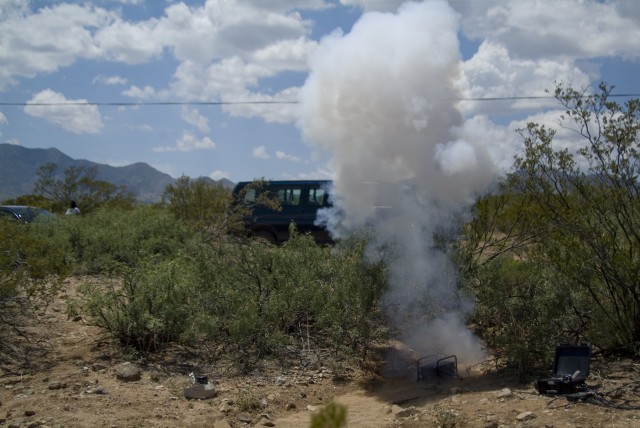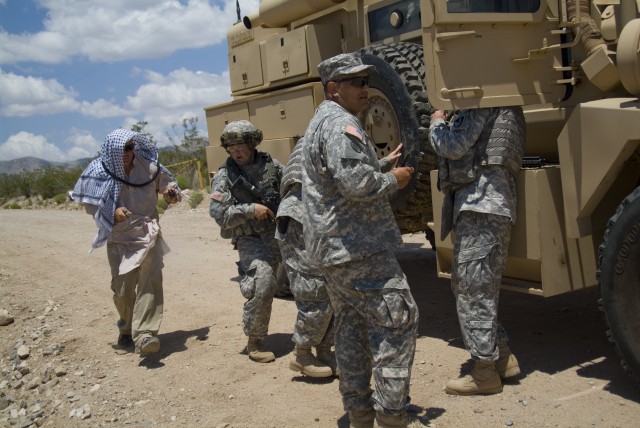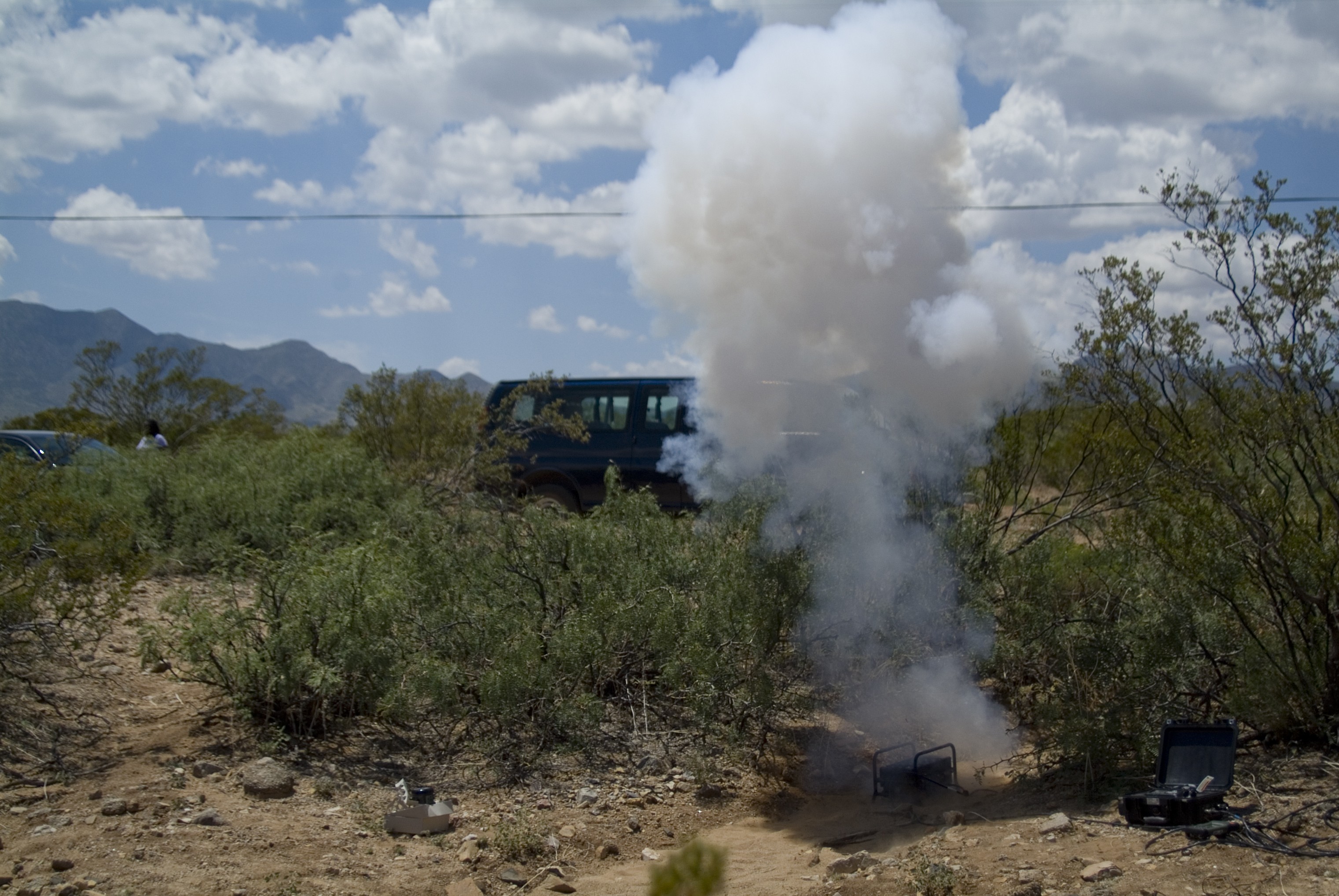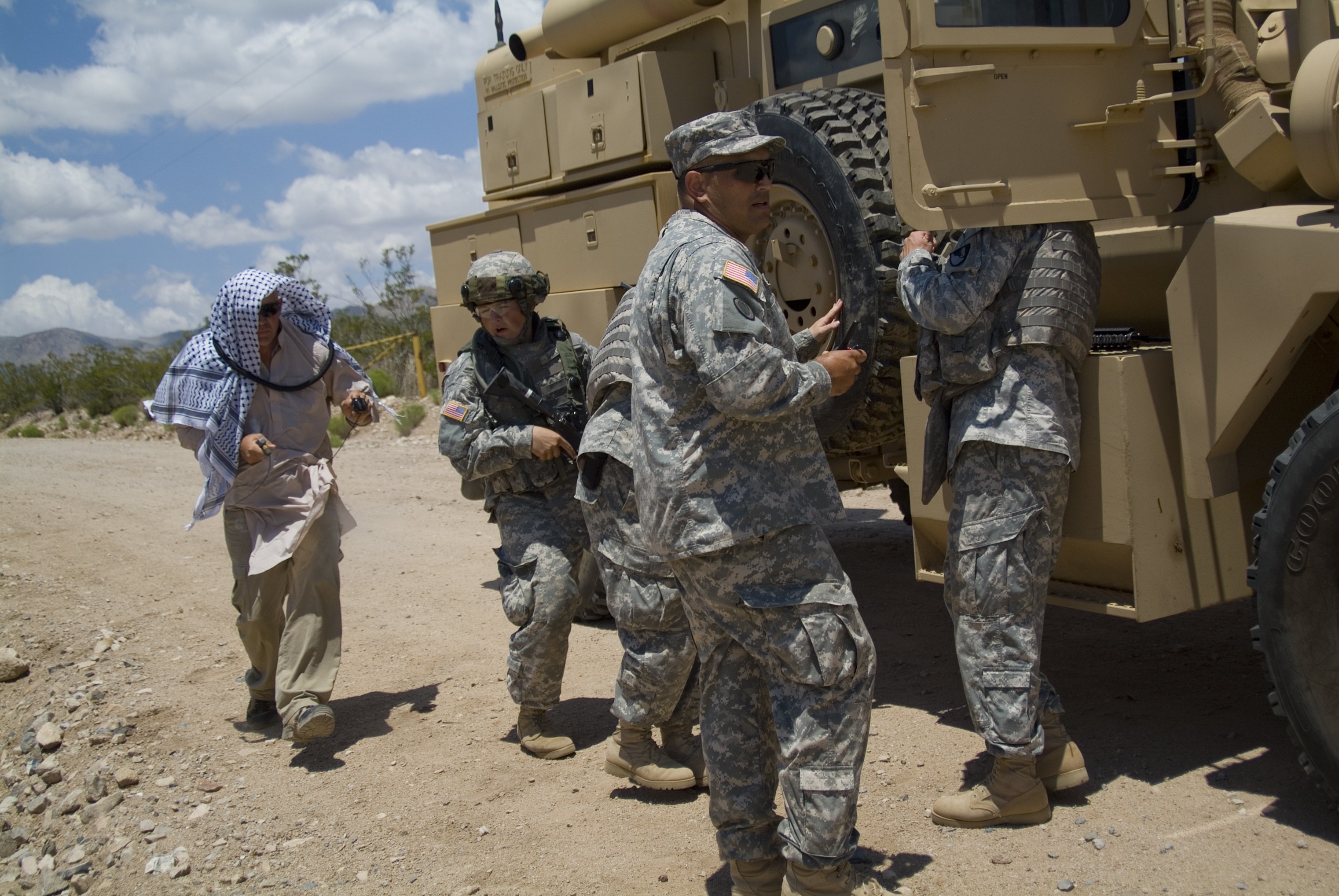WHITE SANDS MISSILE RANGE, N.M. -- Soldiers and civilians from 19 different installations and facilities all over the country came to White Sands Missile Range late July to learn how to use the latest in improvised explosive device simulation devices.
Training deploying Soldiers how to identify, locate and respond to threats like suicide bombers, IED and booby traps is critical for today's war fighter.
In the past trainers have had to improvise or use off-the-shelf materials to represent an IED, booby trap or suicide vest. Now Soldiers and civilians are coming to White Sands Missile Range to learn how to use the Army's latest tools in teaching servicemembers how to defend themselves from these threats.
Using quick burning pyrotechnics, cold smoke powder, and compressed gasses the purpose built training tools can allow trainers to safely and effectively simulate the effects of an IED.
"The idea is to produce enough sound and blast so that you can hear it in a vehicle," said Master Sgt. Micheal Barrera, the systems training integration and devices team noncommissioned officer in charge of IED effect simulation new equipment training.
The devices that had been used in the past, often built by the trainers out of readily available materials, didn't always meet this requirement and sometimes posed a safety or fire risk.
Further enhancing the training effectiveness of the new devices is the Multiple Integrated Laser Engagement System module that they can be connected to. An advanced military training tool similar to the game "Laser-Tag" the MILES system allows Soldiers to participate in training exercises and track hits, misses and casualties.
By incorporating the MILES modules into the IED simulators, Soldiers and trainers can better incorporate the effects of IEDs in an actual field training exercise. "So you can put out the IEDs and booby traps and get the MILES effects with all of it," said Barrera.
Soldiers and training officers that teach counter IED tactics as well as warehouse workers where the devices are stored were all trained on the new equipment to ensure that they could operate and maintain the devices as well as deploy them in training lanes and exercises.
For the final portion of their training, the Soldiers and civilians actually ran a training lane for members of the 2nd Engineer Battalion's 573rd Route Clearance Company.
"We want to make sure that (the trainers) can use everything they've been taught in a real lane," said Barrera. Not only did the practice act as a final exam for the trainers, the engineers received valuable training in the identification and defeat of IEDs.




Social Sharing